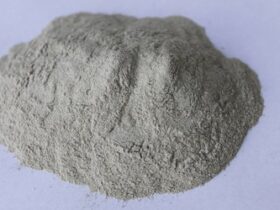Greg Bishop, a recently retired Park City attorney, discussed how important aerobic exercise is, particularly during retirement. In September 2008, the U.S. Department of Health and Human Services (HHS) released the first edition of its Physical Activities Guidelines for Americans. The Guidelines contained science-based conclusions that physical activity both promotes health and reduces the risk of chronic diseases. In preparing the second edition of the Guidelines, HHS appointed industry experts to serve on its 2018 advisory committee. The committee’s two-year assignment was to analyze relevant scientific data to either confirm the original Guidelines or suggest appropriate revisions. HHS used the committee’s report as the primary source to update its Guidelines, which is issued in November 2018.
Recommended Levels of Aerobic Activity
The 2018 Guidelines reconfirmed HHS’s original recommendations concerning the amount of physical activity that Americans need every week. Among other things, the Guidelines recommend that adults should engage in at least 2.5 hours of moderate-intensity aerobic exercise each week (preferably spread throughout the week). The Guidelines note that additional health benefits are gained by increasing the amount of moderate aerobic exercise from 2.5 to 5 hours a week. Health benefits increase even more if people increase their weekly aerobic exercise over 5 hours a week.
HHS explained that its time-based recommendations could be cut in half by increasing the level of intensity from moderate intensity (such as brisk walking) to vigorous intensity (such as jogging or running). HHS noted that engaging in aerobic activities provide substantial health benefits apart from those gained from muscle-strengthening activities alone, which is also recommended.
The Guidelines report that as of 2016, only 26% of men and 19% of women (ages 18 to 64) met the recommendations for both aerobic and muscle-strengthening exercise. The proportion of older adults (65 and older) who met the Guidelines was also very low (about 27% based on 2011-2012 data).
Aerobic Exercise
The term aerobic exercise – sometimes referred to as cardiovascular or endurance exercise – refers to physical activities where people use the large muscles of the body, often in a rhythmic manner, for a sustained period of time. Examples of aerobic exercise include brisk walking, swimming, jogging, and cycling. Aerobic activity increases a person’s heart and breathing rates in order to meet the demands of the activity. Over time, regular aerobic activity makes the person’s cardiorespiratory system stronger and more fit.

All aerobic activity counts toward meeting HHS’s weekly recommendations, provided that they are of sufficient intensity. For example, aerobic activity from a physically demanding job would count, as would active transportation such as walking or cycling. To receive the relevant health benefits, the total amount of aerobic activity is more important than the length of each particular episode of aerobic activity.
Benefits of Meeting the Aerobic Guidelines
Mr. Bishop explained that being physically active is one of the most important things that adults – particularly older adults – can do to improve their health. HHS estimates that the failure of Americans to meet the Guideline’s recommendations on aerobic activity accounts for about $117 billion in annual health care costs, and about 10% of the premature deaths each year.
HHS reports that when adults do the equivalent of at least 2.5 hours of moderate-intensity aerobic activity each week, they receive substantial health benefits, including lowering the risk of:
- Death (from all
causes) - Coronary heart
disease - Stroke
- Hypertension
- Type 2 diabetes
- Some cancers
- Anxiety
- Depression
- Alzheimer’s disease
and other dementias
In addition, physically active adults also sleep better, have improved cognition, and enjoy a better quality of life.
As a person moves from 2.5 hours toward 5 hours a week, the health benefits become more extensive, including an even lower risk of heart disease and type 2 diabetes. Adults who regularly exercise near or at the 5 hours a week recommendation gain additional health benefits, including a further risk reduction for several cancers and the prevention of unhealthy weight gain (arising from the physical activity alone). Health benefits continue to increase as a person does more than 5 hours a week of moderate aerobic activity (or the equivalent). In fact, there is no known upper limit of exercise after which additional health benefits will cease to occur.
It’s Never Too Late to Build Aerobic
Strenth and Capacity
Mr. Bishop explains that beginning around the age of 65, aerobic capacity (as compared to that in younger adults) decreases considerably, as much as 30% to 40%. While aerobic exercise is important for everyone, older adults have the most to gain from starting – or maintaining – an aerobic exercise program. The heart, like other muscles, becomes deconditioned when a sedentary lifestyle reduces the demands we place on it. As a result, its contractions become weaker, and it pumps less blood with each beat.
Fortunately, the loss of aerobic capacity – even in older adults – can be reversed through exercise. For example, over the last three decades, multiple studies have documented increases in aerobic capacity among adults in their 60s to 80s that is similar to those in younger adults. In fact, a recent meta-analysis reached two important findings (a meta-analysis is a systematic and quantitative review of the findings of individual studies that are pooled to reach better overall conclusions):
- Healthy older adults who are sedentary can greatly improve their physical fitness by aerobic training (aerobic intensity around 60% of the person’s maximal oxygen consumption – or VO2max – is most effective); and
- A longer aerobic training program – at least 16 to 20 weeks – may be needed for individuals aged 60 years and older before they start seeing greater aerobic (VO2max) improvements.
About Greg Bishop
Greg Bishop has a BA in English Literature, an MBA, a Juris Doctor, and three decades of experience in legal, compliance, and HR matters. In 2019, Utah Business Magazine ranked Mr. Bishop as among the “Legal Elite” for in-house attorneys in the State of Utah. However, he feels that the greatest thing he has to offer is his passion for living life to the fullest and helping and empowering others to do the same.















